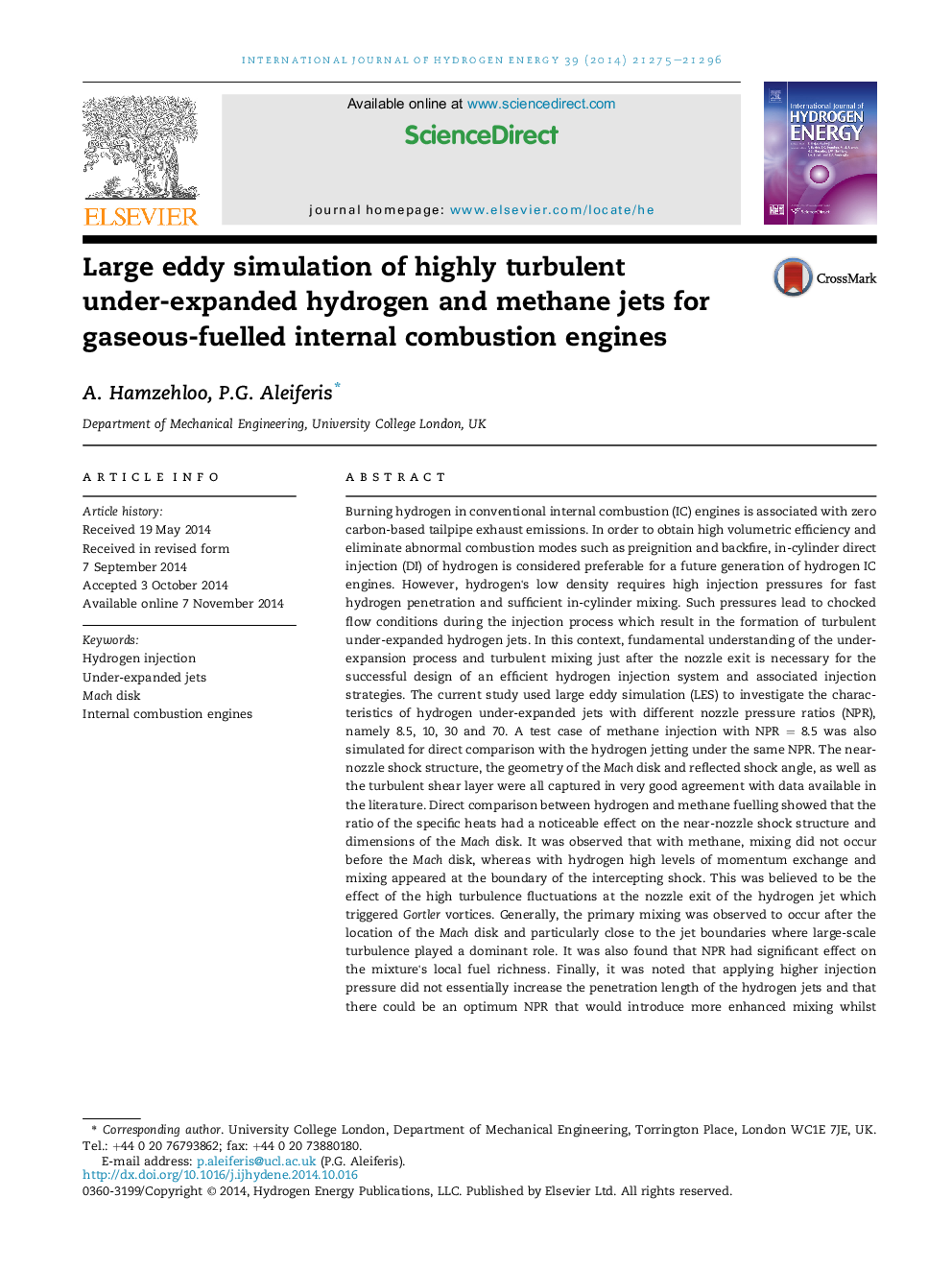| کد مقاله | کد نشریه | سال انتشار | مقاله انگلیسی | نسخه تمام متن |
|---|---|---|---|---|
| 7716931 | 1497473 | 2014 | 22 صفحه PDF | دانلود رایگان |
عنوان انگلیسی مقاله ISI
Large eddy simulation of highly turbulent under-expanded hydrogen and methane jets for gaseous-fuelled internal combustion engines
ترجمه فارسی عنوان
شبیه سازی گردشی بزرگ جت های هیدروژنه و متان بسیار متلاطم با موتورهای جابجایی با گازهای احتراق داخلی
دانلود مقاله + سفارش ترجمه
دانلود مقاله ISI انگلیسی
رایگان برای ایرانیان
کلمات کلیدی
تزریق هیدروژن، جت های تحت توسعه، دیسک ماچ، موتورهای احتراق داخلی،
موضوعات مرتبط
مهندسی و علوم پایه
شیمی
الکتروشیمی
چکیده انگلیسی
Burning hydrogen in conventional internal combustion (IC) engines is associated with zero carbon-based tailpipe exhaust emissions. In order to obtain high volumetric efficiency and eliminate abnormal combustion modes such as preignition and backfire, in-cylinder direct injection (DI) of hydrogen is considered preferable for a future generation of hydrogen IC engines. However, hydrogen's low density requires high injection pressures for fast hydrogen penetration and sufficient in-cylinder mixing. Such pressures lead to chocked flow conditions during the injection process which result in the formation of turbulent under-expanded hydrogen jets. In this context, fundamental understanding of the under-expansion process and turbulent mixing just after the nozzle exit is necessary for the successful design of an efficient hydrogen injection system and associated injection strategies. The current study used large eddy simulation (LES) to investigate the characteristics of hydrogen under-expanded jets with different nozzle pressure ratios (NPR), namely 8.5, 10, 30 and 70. A test case of methane injection with NPRÂ =Â 8.5 was also simulated for direct comparison with the hydrogen jetting under the same NPR. The near-nozzle shock structure, the geometry of the Mach disk and reflected shock angle, as well as the turbulent shear layer were all captured in very good agreement with data available in the literature. Direct comparison between hydrogen and methane fuelling showed that the ratio of the specific heats had a noticeable effect on the near-nozzle shock structure and dimensions of the Mach disk. It was observed that with methane, mixing did not occur before the Mach disk, whereas with hydrogen high levels of momentum exchange and mixing appeared at the boundary of the intercepting shock. This was believed to be the effect of the high turbulence fluctuations at the nozzle exit of the hydrogen jet which triggered Gortler vortices. Generally, the primary mixing was observed to occur after the location of the Mach disk and particularly close to the jet boundaries where large-scale turbulence played a dominant role. It was also found that NPR had significant effect on the mixture's local fuel richness. Finally, it was noted that applying higher injection pressure did not essentially increase the penetration length of the hydrogen jets and that there could be an optimum NPR that would introduce more enhanced mixing whilst delivering sufficient fuel in less time. Such an optimum NPR could be in the region of 100 based on the geometry and observations of the current study.
ناشر
Database: Elsevier - ScienceDirect (ساینس دایرکت)
Journal: International Journal of Hydrogen Energy - Volume 39, Issue 36, 12 December 2014, Pages 21275-21296
Journal: International Journal of Hydrogen Energy - Volume 39, Issue 36, 12 December 2014, Pages 21275-21296
نویسندگان
A. Hamzehloo, P.G. Aleiferis,
